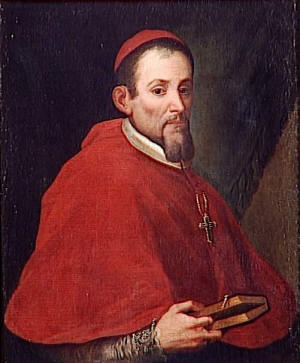Top Qs
Timeline
Chat
Perspective
Luis Antonio Belluga y Moncada
Catholic cardinal From Wikipedia, the free encyclopedia
Remove ads
Luis Antonio Belluga y Moncada (30 November 1662 – 22 February 1743) was a prominent Spanish churchman and statesman during the 18th century.
Remove ads
Biography
Born in Motril, Province of Granada, he was ordained at the age of 14. He served as a lector at the Cathedral of Córdoba, canon at the Cathedral of Zamora, and professor in the Colegio de Santiago in Granada.
He supported Philip V of Spain and the Bourbons during the War of Spanish Succession, and was named by Philip bishop of Cartagena on 9 February 1705, as well as viceroy of Valencia and Murcia where he won the Battle of Murcia.[1] Pope Clement X named him cardinal on 29 November 1719. He served as Camerlengo of the Sacred College of Cardinals (1728–1729), and as a crown-cardinal (circa 1732).[2]
He undertook major urban development and revitalization schemes in Murcia and in Vega Baja del Segura, where he initiated the colonization of uncultivated lands, founded new towns, established a seminary for theologians, drained swamps, and built hospices and hospitals.
In 1736, he provided support to the Capuchin missionary Francesco Orazio della Penna when the latter sought help for his mission in Tibet.[3]
Remove ads
Legacy
A street is named after him in his hometown of Motril, where there is also a statue.

The Plaza del Cardenal Belluga in Murcia is named after him. The Cathedral of Murcia, the episcopal palace of the Diocese of Cartagena, and the Town Hall (with a controversial extension to the town hall by Rafael Moneo) are found on this square.
Remove ads
Notes
Resources
Wikiwand - on
Seamless Wikipedia browsing. On steroids.
Remove ads

